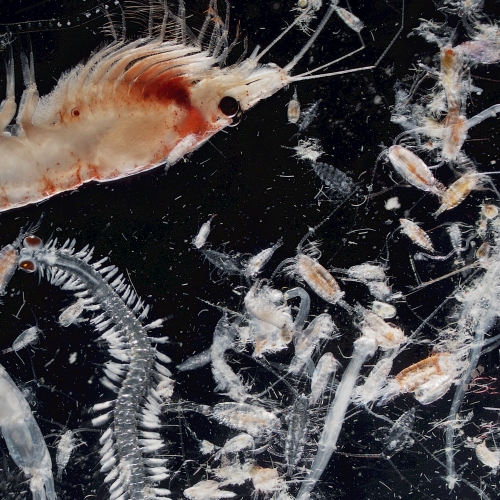





Did you know that size has nothing to do with being a zooplankter? Zooplankters can be tiny copepods or giant jellyfish. Plankton are named after the Greek word planktos (πλαγκτός) which means ‘wanderer’ or ‘drifter’ because they drift with the ocean currents and waves.
There are zooplankton (drifting animals) and phytoplankton (drifting plants). Phytoplankton get their energy from the sun (like plants on land) and zooplankton get their energy from capturing and eating food (like us). Did you know that half of the oxygen you breathe is produced by phytoplankton? And that most phytoplankton gets eaten by zooplankton? Plankton are at the basis of almost all food chains in the ocean. Without plankton, there would be no fish, no whales, not even seabirds!
Some animals are plankton only part of their lives such as the larvae of crabs, lobsters or fish (meroplankton) and others are drifting all of their lives (holoplankton). Holoplankton is the group we are focusing on. There is lots of diversity in this group and there is still a lot that we don’t know about them.
With our plankton nets we are catching many different species of jellyfish, copepods, arrow worms, planktonic snails such as ‘sea butterflies’ and ‘sea angels’ and many more creatures. Are you curious to see what they look like? Stay tuned and we will post our most beautiful pictures taken through the microscope on this blog.

